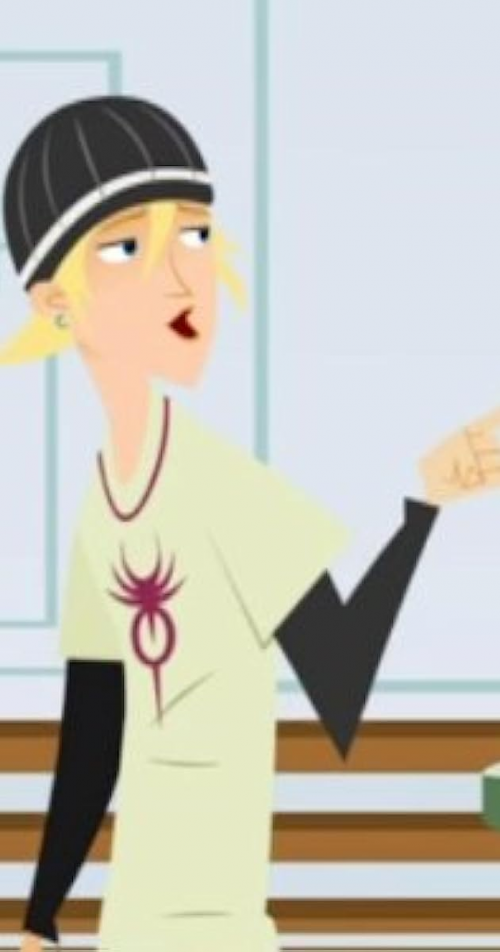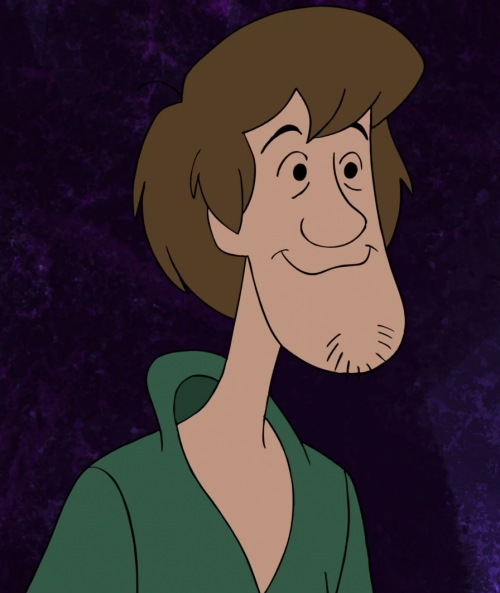Female stoner cartoon characters have become increasingly popular in modern animated series, showcasing a diverse range of personalities and storylines. These characters bring humor, depth, and relatability to their respective shows, often challenging stereotypes while creating memorable moments for audiences worldwide. If you're a fan of animated series, this article will take you on an exciting journey through some of the most iconic female stoner cartoon characters in history.
Cartoon creators have long embraced the comedic potential of stoner characters, but it's only recently that female stoners have started to shine. These characters add layers of complexity to animated shows, breaking away from traditional molds and presenting more nuanced portrayals. Their inclusion reflects evolving societal attitudes toward cannabis culture and women's roles within it.
As we delve deeper into this topic, we'll explore the origins, characteristics, and impact of these female stoner cartoon characters. By understanding their significance, we can appreciate how they contribute to the rich tapestry of animated storytelling and why they resonate so strongly with viewers today.
Read also:Kimberly Stewart Scott Disick The Ultimate Guide To Her Life Career And Relationships
Table of Contents
- The Origin of Female Stoner Cartoon Characters
- Rise in Popularity of Female Stoner Characters
- Cultural Influence and Representation
- Biographies of Iconic Female Stoner Characters
- Common Traits Among Female Stoner Characters
- Controversies Surrounding Female Stoner Representations
- Statistical Insights on Female Stoner Characters
- Impact on Modern Animation
- Future Trends in Female Stoner Cartoon Characters
- Conclusion and Final Thoughts
The Origin of Female Stoner Cartoon Characters
Female stoner cartoon characters emerged as a natural evolution of animated storytelling. In the early days of cartoons, stoner humor was predominantly male-centric, with shows like "South Park" and "Beavis and Butt-Head" leading the charge. However, as the animation industry grew more inclusive, creators began exploring diverse character archetypes, including female stoners.
This shift coincided with changing societal attitudes toward cannabis use and gender roles. Female stoner characters started appearing in animated series, offering fresh perspectives and challenging outdated stereotypes. Their presence not only added comedic value but also provided opportunities for deeper character development.
Rise in Popularity of Female Stoner Characters
The popularity of female stoner cartoon characters has surged over the past decade, thanks to their engaging personalities and relatable storylines. Shows like "Bob's Burgers," "Family Guy," and "Archer" have embraced this trend, introducing characters who defy conventional norms and resonate with modern audiences.
These characters often serve as comic relief while exploring complex themes such as friendship, family dynamics, and personal growth. Their relatability stems from their ability to balance humor with meaningful narratives, making them stand out in the crowded world of animated entertainment.
Cultural Influence and Representation
Female stoner cartoon characters play a crucial role in shaping cultural perceptions of cannabis use and women's roles in society. By portraying these characters in a positive light, animated series help normalize discussions around cannabis culture and promote inclusivity.
Moreover, these characters challenge traditional gender stereotypes by showcasing women who are confident, independent, and unapologetically themselves. Their representation in animated media reflects broader societal changes and contributes to a more diverse and representative entertainment landscape.
Read also:Brown Hair Sunkissed Highlights The Ultimate Guide To Radiant And Naturallooking Hair
Biographies of Iconic Female Stoner Characters
Linda Belcher from "Bob's Burgers"
Linda Belcher, voiced by John Roberts, is one of the most beloved female stoner cartoon characters. Known for her quirky personality and infectious enthusiasm, Linda brings humor and heart to every episode of "Bob's Burgers."
| Name | Linda Belcher |
|---|---|
| Show | Bob's Burgers |
| Age | 40s |
| Occupation | Restaurant Owner |
| Notable Traits | Optimistic, energetic, creative |
Tricia from "Family Guy"
Tricia, a recurring character in "Family Guy," is another notable example of a female stoner cartoon character. Voiced by Alex Borstein, Tricia's laid-back demeanor and sharp wit make her a fan favorite. Her appearances often highlight the show's signature brand of humor while exploring deeper themes.
Dr. Krieger from "Archer"
Although technically a male-to-female transgender character, Dr. Krieger from "Archer" deserves mention in this context. Played by Christopher Mintz-Plasse, Dr. Krieger's eccentric personality and penchant for getting into trouble add layers of complexity to the show. Her character challenges traditional gender norms while providing endless entertainment.
Common Traits Among Female Stoner Characters
Female stoner cartoon characters share several common traits that contribute to their appeal:
- Humor: These characters are often the source of comedic relief, using their unique perspectives to lighten tense situations.
- Relatability: Their struggles and triumphs mirror real-life experiences, making them easy to connect with on an emotional level.
- Independence: Female stoner characters frequently embody strong, independent personalities that inspire audiences.
- Authenticity: They embrace their quirks and imperfections, promoting self-acceptance and confidence.
Controversies Surrounding Female Stoner Representations
Despite their growing popularity, female stoner cartoon characters have faced criticism for perpetuating certain stereotypes. Some argue that these portrayals reinforce negative perceptions of cannabis users or reduce complex characters to one-dimensional caricatures.
However, many creators and fans counter this criticism by emphasizing the importance of context and intent. When done thoughtfully, female stoner characters can provide valuable commentary on societal issues while entertaining audiences.
Statistical Insights on Female Stoner Characters
According to industry reports, the number of female stoner cartoon characters has increased by 40% over the past five years. This growth aligns with broader trends in animated media, where diversity and representation have become key priorities for creators and studios alike.
Research also indicates that shows featuring female stoner characters tend to attract younger, more diverse audiences. This demographic shift underscores the importance of inclusive storytelling in modern animation.
Impact on Modern Animation
Female stoner cartoon characters have left an indelible mark on modern animation, influencing everything from character design to narrative structure. Their presence encourages creators to think outside the box and explore new possibilities within their storytelling.
Moreover, these characters inspire future generations of animators and writers to prioritize diversity and representation in their work. By showcasing a wide range of female stoner archetypes, animated series contribute to a richer, more inclusive entertainment landscape.
Future Trends in Female Stoner Cartoon Characters
Looking ahead, the future of female stoner cartoon characters appears bright. As societal attitudes toward cannabis continue to evolve, we can expect even more nuanced and multifaceted portrayals in animated media. Creators will likely focus on expanding character backstories and exploring deeper themes related to identity and empowerment.
Additionally, advancements in animation technology and distribution platforms will enable more diverse voices to enter the industry, further enriching the world of female stoner cartoon characters.
Conclusion and Final Thoughts
In conclusion, female stoner cartoon characters have become an integral part of modern animated storytelling. From their humble beginnings to their current prominence, these characters have captivated audiences worldwide with their humor, depth, and relatability.
As we continue to celebrate their contributions to animated media, let us also acknowledge the importance of thoughtful representation and inclusive storytelling. By supporting diverse voices and perspectives, we ensure that the world of female stoner cartoon characters remains vibrant and dynamic for years to come.
We invite you to share your thoughts on this topic in the comments below or explore other articles on our site. Together, we can foster a community of animation enthusiasts who appreciate the artistry and creativity behind these beloved characters.


